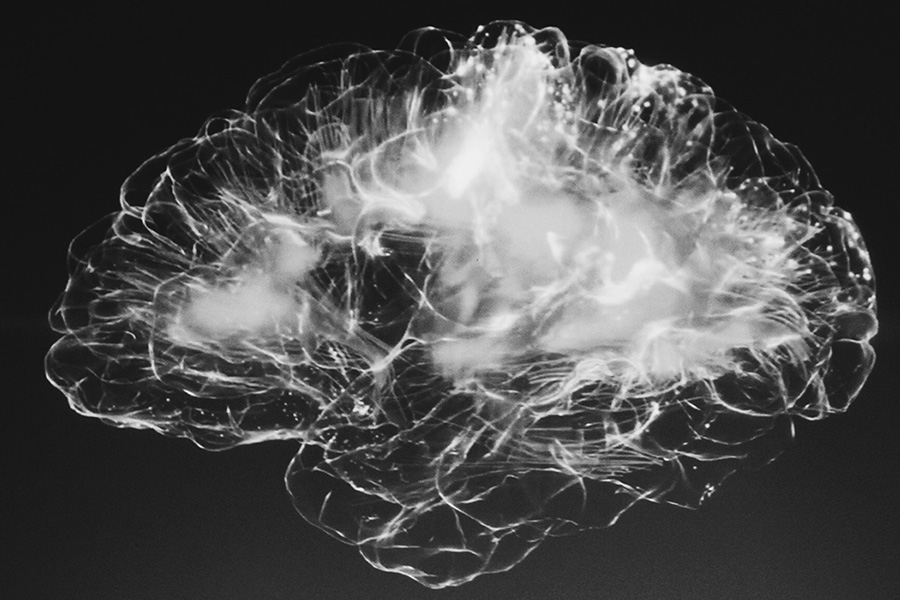
Noninvasive Brain Stimulation at Unprecedented Resolution
In 2019, sitting in his office running computer simulations, Chaitanya Goswami, a Ph.D. student in Carnegie Mellon’s electrical and computer engineering department, noticed something that seemed too good to be true. The current patterns he had designed for focused non-invasive stimulation of the brain seemed to perform better than expected. It is well known that the skull disperses currents, reducing focus attained in the brain. Surprisingly, even when Chaitanya removed the skull in his simulations, the current pattern seemed as focused as with a skull.
“The skull became electrically transparent,” said Goswami. “I thought this was an error. These simulations, after all, take a lot of pieces to work together and small errors can have big implications.”
To get to these simulations, Chaitanya had hand-derived equations for how current in the brain can be described for an injected current pattern in the scalp. Chaitanya is a member of a team of researchers from Carnegie Mellon University, who received a $11 million grant from the Defense Advanced Research Projects Agency (DARPA), to design a noninvasive neural interface that can be used as a wearable device for clinical applications and brain-machine interfacing.
Despite his skepticism, Goswami discussed these results with fellow team member Mats Forssell, a postdoctoral student in the electrical and computer engineering department, who was doing physics experiments. Forssell was using Goswami’s patterns to map the field generated in the brain using physics setups that mimic human tissue conductivity.
“Strikingly, I was observing this ‘skull transparency’ experimentally,” Forssell noted.
Both got excited and published a co-authored work in the Journal of Neural Engineering. They also shared their observations with Vishal Jain, a neurobiologist who, along with Forssell, was building a novel platform for testing noninvasive stimulation in alive brain slices.
Jain’s platform was designed to test and improve strategies like this. The three joined hands to test these strategies experimentally in Jain’s platform.
“The results were a dramatic improvement over what clinicians do today. I immediately realized that this can have a deep practical impact on people’s healthcare,” said Jain.
In the first phase of the DARPA award, on Jain’s platform, the team successfully created a neural interface that is capable of recording and stimulating the brain's dynamic activity with high temporal and spatial resolution. This novel neural interface could enable unprecedented access to neural circuits to study brain function and dysfunction, as well as begin designing precise therapeutic interventions to treat neurological diseases and conditions such as epilepsy, pain, and depression.
However, the team faced a stumbling block. Implementing these strategies on animals, let alone humans, required electrode patches that are much higher density than current systems. For implementations such as these, the team asked for help from Derya Tansel, a Ph.D. student in the electrical and computer engineering department, and an expert in flexible, wearable electronics.
“For this project, I designed high-density patches for rodents, monkeys, and humans and all of them provided strong evidence that the team’s ‘SharpFocus’ strategies are radical improvements over what is possible today,” said Tensel. “It has been a really exciting opportunity to learn from the biologists and implement their experiences on top of our own experiences into making a suitable FlexPCB patch that will fit the test subject well.”
The translation of rodent work to monkeys was led by Maxwell Murphy, a postdoctoral fellow, and Darcy Griffin, special faculty in Neuroscience Institute at Carnegie Mellon.
“We were also a little bit surprised the first time it worked. It’s been exciting to apply the theoretical models developed using data from a small animal model to generate empirical results in a large one,” said Murphy.
“So far, we have been able to demonstrate the ability to steer current in the motor cortex. In fact, the patterns are focused enough to reproduce the known brain representations for the arm and hand,” Griffin said.
Now in Phase 3, the team has initiated testing on human subjects.
“The project has made dramatic advances in stimulating large and small animals, non-invasively,” says Pulkit Grover, the Angel Jordan Professor of Electrical and Computer Engineering and lead PI. “The resolution of our stimulation – in both space and time – is unprecedented. We are now translating these techniques to humans as well as collaborating with clinicians on testing them for treatments of neurological conditions.”
DARPA's "Next-generation Nonsurgical Neurotechnology" (N3) program aims to develop high-performance, bi-directional brain-machine interfaces. The team's techniques synthesize concepts in physics, biology, optimization, and artificial intelligence, to obtain unprecedented resolution of non-invasive stimulation.
A collaborative effort, the project draws from expertise across Carnegie Mellon University’s College of Engineering. The team of researchers is led by Pulkit Grover. Faculty researchers include Maysam Chamanzar, the Dr. William D. and Nancy W. Strecker Career Development Associate Professor of Electrical and Computer Engineering, Doug Weber, the Akhtar and Bhutta Professor of Mechanical Engineering and researcher from the Neuroscience Institute, Darcy Griffin, special faculty researcher from the Neuroscience Institute, and Gary Fedder, the Howard M. Wilkoff Professor of Electrical and Computer Engineering.